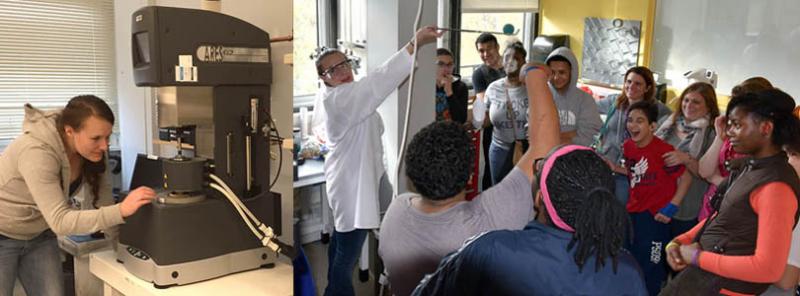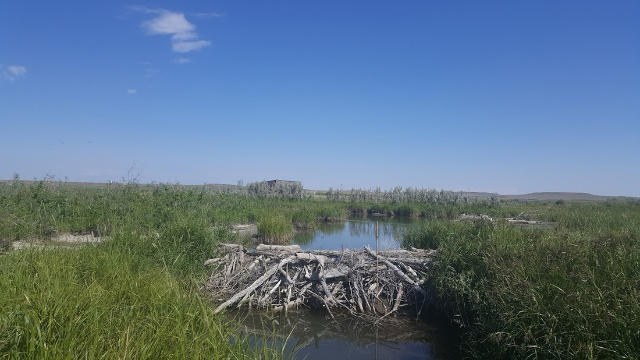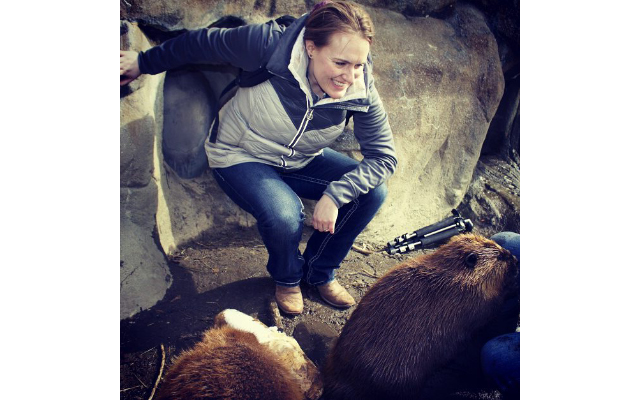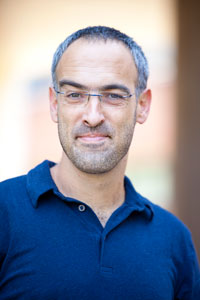News
Jordan Kennedy, a materials science and mechanical engineering Ph.D. candidate at SEAS, will begin a thesis project this summer to study how beavers build mechanically robust structures using inferior materials. (Photo by Adam Zewe/SEAS Communications.)
When Ph.D. candidate Jordan Kennedy returns to rural Montana this summer to begin her thesis project, her journey from ranch kid to researcher will come full circle.
Kennedy, who grew up on a 1,200-acre cattle ranch on the Blackfeet Indian Reservation, spent her childhood helping her father raise calves and never considered pursuing a research career. Her interest in engineering was piqued during an ill-fated high school biology lab. Kennedy accidentally trashed the lab during an overly ambitious science fair experiment involving sand, electric fans, and wind breaks made from Popsicle sticks.
“Once my biology teacher calmed down a bit, she suggested that I look into engineering for a career,” she said.
Kennedy took that advice, majoring in mechanical engineering at Montana State University. But she struggled through classes she often found tedious, and began to think that college might not be for her. Kennedy’s advisor reached out and suggested she start working on research projects.
“Being able to conduct research really helped motivate me,” she said. “Some days, the only reason I showed up for class at all was so I could spend time playing in the lab.”
She was recommended for graduate school, but was unsure if she would fit into such a rigorous academic environment. Buying some time, she took a position as an applied physics fellow in the lab of David Weitz, Mallinckrodt Professor of Physics and Applied Physics at the Harvard John A. Paulson School of Engineering and Applied Sciences (SEAS). When she arrived in Cambridge, she realized it could not have been more different from the world she left behind.
“When I first came to Harvard Square, I was in culture shock. I was totally lost, dragging my suitcase behind me with everything I owned in it, with no idea how to find Mather Hall,” she said.
But she felt at home in research labs, and relished the opportunity to use the best equipment and work alongside ambitious students and accomplished faculty. She was accepted into three Ph.D. programs, SEAS among them, and decided that despite the distance from her ranch, she would stay in Cambridge.

Kennedy conducts a science demonstration for elementary school students in the Rubinstein Lab. (Photo courtesy of the Harvard Materials Research Science and Engineering Center.)
Now, as a materials science and mechanical engineering Ph.D. candidate in the lab of Shmuel Rubinstein, Assistant Professor of Applied Physics, she is preparing to launch a research project that will bring her back home.
Kennedy will study the beavers that are plentiful throughout the northwestern Montana reservation to better understand how they implement poor materials to build dams that are mechanically robust.
“These beavers are using materials like mud, timber, rocks, and weeds—materials we would never traditionally consider to be mechanically robust,” she said. “And not only do they manage to build these structures with inferior materials, they do it extremely quickly.”
She will study factors that contribute to the mechanical strength of the beaver structures, but also the animal-logic that underlies the process. A beaver colony typically consists of between six and eight animals, and they may be responsible for building and maintaining up to 18 dams across dozens of square miles.
“How do they distribute that work?” she said. “Beavers really do fundamentally change their entire environment. They dig out deeper ponds, flood certain areas by building dams, and they even dig channels to trees so they can chop wood and float it back to their dams.”

A beaver dam on the Kennedy ranch in northwestern Montana. (Photo provided by Jordan Kennedy.)
Kennedy, who has written a grant to support the project, is planning to enlist the help of five undergraduate students at the Blackfeet Community College to collect data. She has received support from the college administration, and has the blessing of tribal leaders to conduct her research on relatively untouched swathes of Blackfeet land.
“Research was such an important part of me obtaining my degree,” she said. “Like me, these undergraduate student come from a rural reservation background where there aren’t many opportunities like this. I would like to engage my community with this idea of empowerment through indigenous ways of knowing.”
Indigenous traditions make the project even more significant for Kennedy. The Blackfeet tribe believes the beaver is one of the fundamental animals of creation, she explained. During certain traditional religious ceremonies, tribal leaders unravel the beaver bundle, a ceremonial medicine artifact that contains objects related to healing.
She is excited about the opportunity to empower tribal students by connecting them with their culture, while also emphasizing lessons they can learn from the natural world.
The results of this research may have implications far beyond rural Montana. The project could help engineers develop new methods to quickly build robust structures when only poor materials are available. Her results could be applicable in a number of situations, such as in areas devastated by natural disasters, and even in far-reaching projects like the potential terraforming of Mars.
While she finds these future prospects intriguing, Kennedy feels a deep sense of gratitude to be able to give back to her community through science.
“Recently, in many cases, Native Americans are in the process of reclaiming identity,” she said. “Many tribes have suffered the loss of both our languages and our cultural values. Reclaiming that identity and finding value in it is really powerful for me. Science gives us a tremendous opportunity to ask questions and explore the world through that indigenous lens.”

Kennedy visit the beavers at the Buttonwood Zoo in New Bedford, Mass. (Photo provided by Jordan Kennedy.)
Cutting-edge science delivered direct to your inbox.
Join the Harvard SEAS mailing list.
Scientist Profiles
Shmuel Rubinstein
Associate in Materials Science and Mechanical Engineering
Press Contact
Adam Zewe | 617-496-5878 | azewe@seas.harvard.edu

